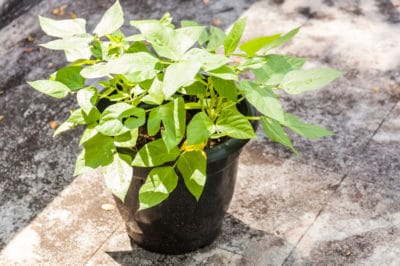Choose the Right Pot
The depth and diameter of a pot are critical when choosing bean varieties. Bush beans need at least six to eight inches of soil and pole beans need eight to 12. Additional depth is better, however. You can plant nine bean plants in a pot with a 12-inch diameter. Choose sturdy pots with a wide base, especially for pole varieties.
Varieties for Pots
Any variety of green bean can be planted in a pot, so make your choices based on what’s available and your personal tastes. These are good possibilities:
- Bush or pole Blue Lake.
- Bush or pole Kentucky Wonder.
- Romano Italian pole.
- Topcrop bush.
- Black Valentine bush.
- Pencil Pod Black Wax half-runner.
Soil for Bean Pots
Although beans can fix their own nitrogen, they still need fertile soil. You can use commercial organic potting soil or soil from your garden. Make sure the garden soil has plenty of added humus like rotted leaf mold or aged manure to promote drainage. Always use a soil inoculant to promote nitrogen fixation; this is especially important with potting soil.
Water Properly
Beans need plenty of water to grow, flower and set pods. However, constantly wet soil increases the risk of molds and mildew. Your pots should drain well; if not, make additional drain holes. Clay pots have the advantage that they will evaporate water through their sides. In humid climates, they may be a better choice than plastic. Use manure tea or 5-10-10 liquid fertilizer as needed.
Supporting Pole Varieties
Pole varieties of green beans can easily grow six feet or more, even in a pot. You could place your pots along a metal fence panel or chain link fence for support. Put a pole in the middle of a pot and plant four to six seeds at the base. You could also place three or four pots in a circle with a pole in each pot and lash the tops together in teepee fashion.
Harvesting Green Beans
Green beans offer a wide variety of maturity dates in both bush and pole varieties. Bush beans typically only set one crop, while pole beans produce over a long period. Your goal is to harvest before seeds have completely developed and while the pods are still tender. The ideal length is usually about three to four inches. Cut, don’t pull, beans from stems.
